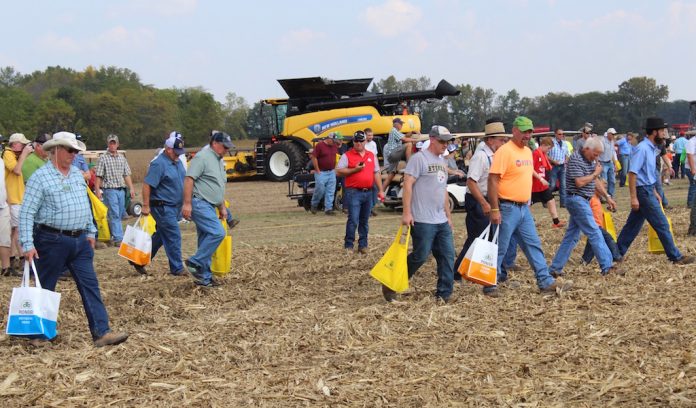LONDON, Ohio — You can’t say for sure the rain that fell over this year’s Farm Science Review was an act of climate change.
Nor the heavy rains that washed out fields in northwest Ohio in early spring. Nor the October-like weather that showed up in late August, nor the August weather that showed up in late September.
Each of these is an act of “weather,” according to Aaron Wilson, a senior research associate with OSU Extension. When looked at over a longer period of time, however, these events become part of “climate.”
“You can’t say a single event is climate change,” he said. “What you say is ‘climate change makes these types of events more likely to occur.’”
Historic swings
Whatever you call it, the issue is real for Ohio farmers who are battling historic swings in temperature and precipitation.

Winters in Ohio are warming quicker than summers, while summer nighttime lows are increasing faster than daytime highs.
And there’s been a noticeable increase in heavy rain events, which not only delay field work, but also cause the kinds of runoff that carries farm nutrients into Lake Erie and Ohio’s inland lakes and streams.
In Darke County, 10 to 12 inches of rain fell in May, causing corn growers to replant. Rainfall for the month typically averages 4 inches, about one-third of what fell this past May, Wilson said.
Across the globe, temperatures have increased by roughly 1.5 degrees Fahrenheit over the past century. The last three years were the three warmest on record.
Changes in temperature and precipitation also contribute to more issues with invasive weeds and insects, including Palmer Amaranth.
Part of the problem, Wilson said, is that winters are staying warmer and we’re seeing earlier warm-ups in late winter, or early spring. That was the case this past February, when warmer temperatures helped get some plants off to an early start — only to be damaged by late season freezes.
This was Wilson’s third year at the Farm Science Review, where he also represented the Byrd Polar and Climate Research Center at Ohio State. He works with a team of researchers who are studying issues related to climate change and trying to share information with the public.
Reaching out
Although the topic can be controversial, Wilson said he wants to work with farmers and also listen to their concerns. He said farmers have an expertise in caring for their land, and are knowledgeable about the kinds of changes happening at their own farm.
“One of my goals is not to alienate people — it’s to help kind of highlight the science of climate change,” he said. “(And) get rid of the political baggage that comes along with it.”
One thing farmers always want to know is what the upcoming season will bring, and of course, “How soon can I plant?”
From what Wilson can tell, it looks like the heat will give way to daytime highs in the 60s by the end of September and into the first of October.
Looking to winter
He sees a strong probability of a La Nina winter, which, in Ohio, usually means highly variable weather.
During a La Nina winter, the Ohio Valley usually experiences highly variable temperatures that usually average out to be slightly warmer.
He’s also keeping an eye on soil moisture. While most of the state looks pretty good, some northern Ohio counties are drying out.
According to the U.S. Drought Monitor, at least 10 northern Ohio counties were experiencing abnormally dry soil moisture, as of the Sept. 21 report. Pennsylvania had three counties abnormally dry, all in western Pennsylvania. The “abnormally dry” designation is the first in five drought severity indexes.










